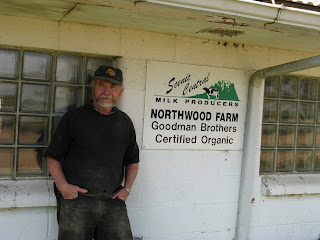 |
| At Peggy's Cove, Nova Scotia. |
That's what I was trying to do when I stepped inside the Sou'wester gift shop to log onto the wifi to send an email to Jon. I was in an entryway of the building, which was crowded with cruise ship tourists who had taken a bus from Halifax. I started chatting with a man named David, who, despite the sunny day, was disappointed with his visit. Because he was unaware of the time change from the eastern US to Nova Scotia, he had missed an earlier bus that would have taken him from the ship to the Maritime Museum of the Atlantic and the Fairview Lawn Cemetery. Turns out, his grandfather had been a crew member on the Titanic and had died after the sinking, on April 15, 1912. David wanted to pay his respects and to do so he and his wife had flown from England to New York where they'd boarded a cruise ship for Halifax.
I told David and his wife, Beryl, that I could try to find the grave and send him a photo; that was the best I could offer. I took down his email address and his grandfather's name. Lynn joined my quest; we'd see what we could learn.
Honestly, I hadn't even thought about the Titanic when we'd arrived, but Halifax is where the ships that retrieved bodies were based. (The dead were buried at sea or taken to Halifax; the living, taken to New York aboard the Carpathia.) They were cable ships, such as the Mackay-Bennett - ships which laid and repaired the telegraph cables that lay on the ocean floor between Europe and North America. Later that night, I went online to see if I could find where John Bannon was buried.
What I learned was that he was 32 years old and married, listed as having lived in Southampton, England, and held the position of greaser in the engine department. He was last seen paddling away on a piece of debris, but as far as I could learn, his body was never recovered. I wondered what David wanted to see. Was there a memorial; someplace where I'd find his grandfather's name inscribed on a wall or monument? I found none listed.
The next day, Lynn and I stopped by the cemetery and strolled between the headstones, listening in on stories told by the tour guides. We found no memorial aside from those to individuals, named and unnamed, whose bodies had been recovered. Each headstone included a number which represented the order in which the body was pulled from the ocean. I asked a guide if there was a listing anywhere in Halifax of all the people who had not been recovered, who had been lost at sea. He didn't know. But he promised to find out. After leaving the cemetery, I had Lynn drop me off at the maritime museum. I wanted to check out the Titanic exhibit as well as other displays. The staff told me there was a list of names in the exhibit.
On the second floor of the museum, a small space is set aside for the Titanic (just one of many maritime disasters described at the facility). There I saw a ledger, part of a report on the investigation into the disaster, which included a list of all the crew members and their departments. The rightmost column told the person's fate. Most crew were lost.
 |
| The report. John Bannon is listed at the bottom. |
 |
| Mural detail at the museum. |
 |
| Mural, a little blurry, but you get the idea. |
I haven't given up on finding out more about John Bannon. I keep researching, seeing what else I can uncover. Like the possibility that John may have originally been from Liverpool, instead of Southampton where 724 members of the 885-person crew signed on to work aboard the Titanic. I also learned that he was Catholic, which would mean that had his body been recovered and identified, he would have been buried at Mount Olivet Cemetery instead of Fairview. This is just one person of all the people who were lost, each with their stories, their families left behind to wonder and grieve. Generations still searching, especially during this one-hundredth anniversary year.
So, here I am, back in Anchorage, with my new awareness of a man who was lost and missed, but 100 years later, not forgotten. I thank David for letting me into his family so I could learn this story and share it with more people. I hope he finds the answers he is searching for and has another chance to travel back to Halifax.
For facts on number of passengers and crew on board, lives lost, rescued or recovered, here's a site to start your research. These are the numbers I've used. There's lots of information out there; you just need to know what you're looking for.












































